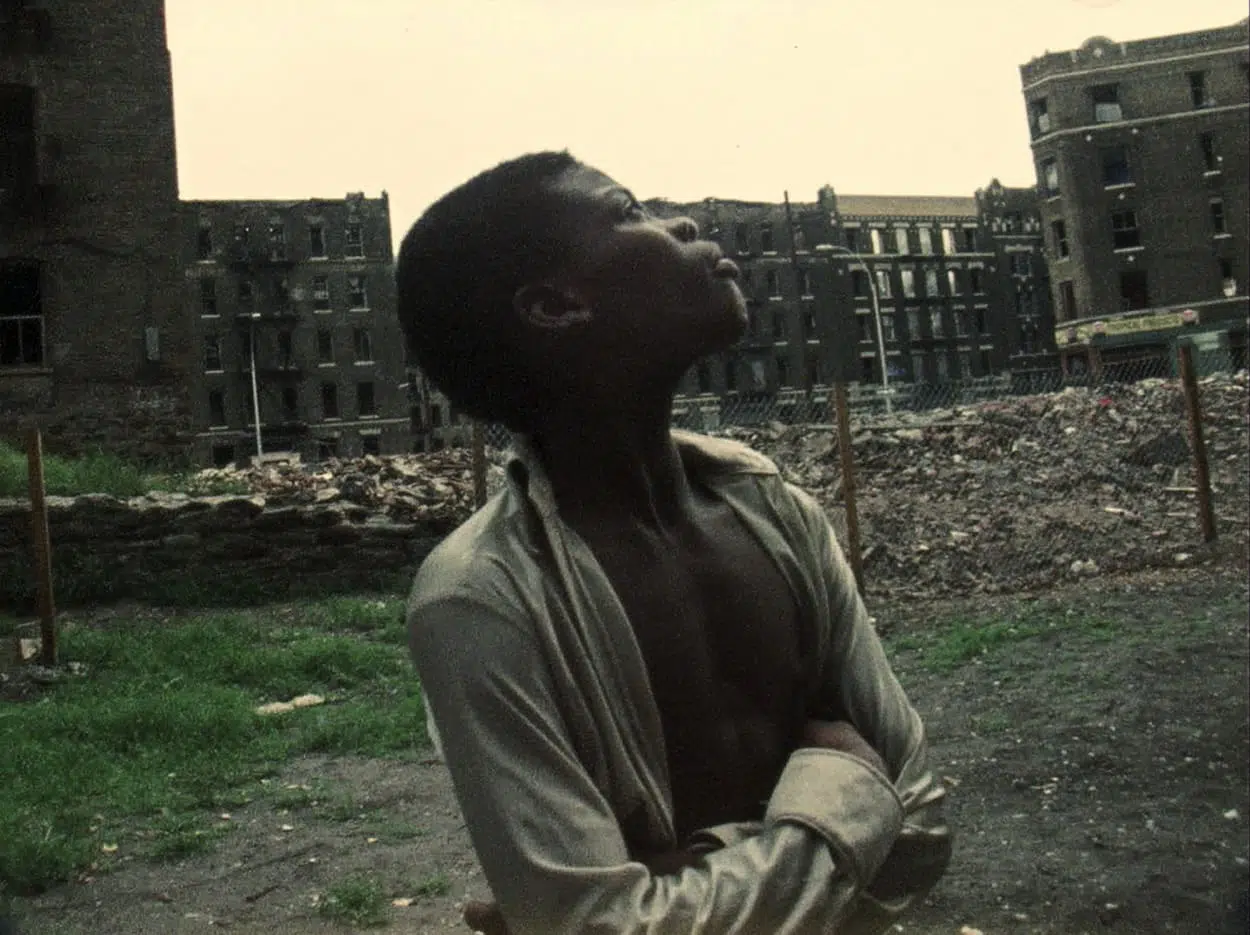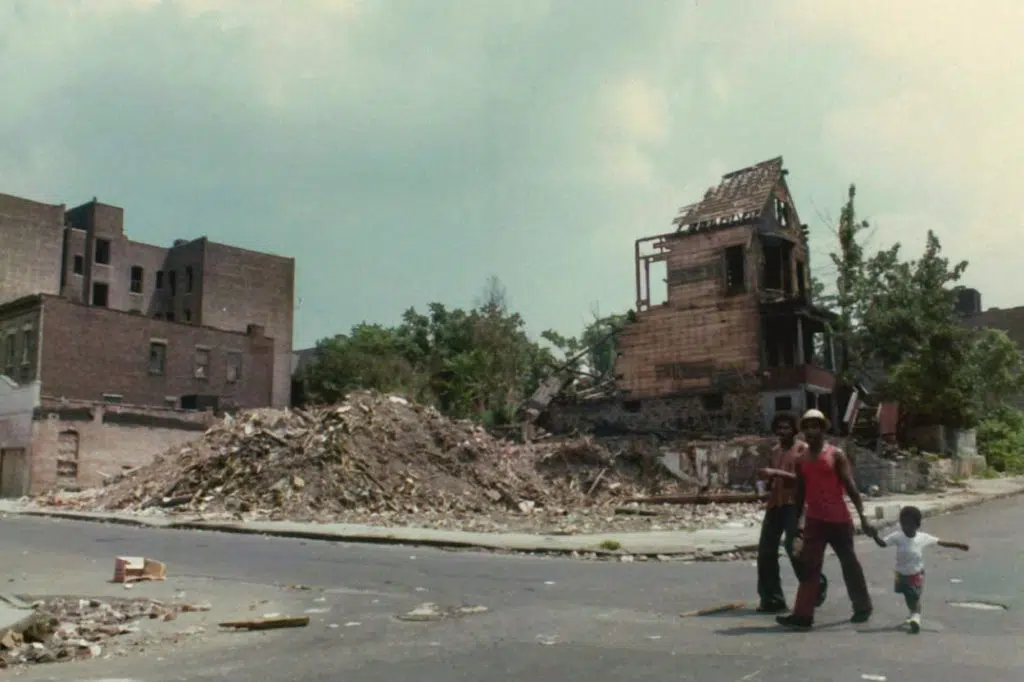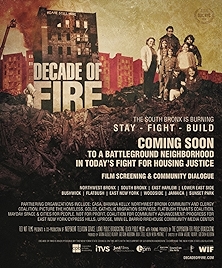Decade of Fire is a mix of the dispassionate investigative documentary and the more personalised Who Do You Think You Are? style of “one person’s journey into the archive”. It works, not always and not entirely, but it works.
Vivian Vazquez is our guide into the history of the South Bronx and the epidemic of fires it experienced, which accompanied and accelerated its shift from buzzy inner-city neighbourhood to burnt-out no-go ghetto. The Bronx became a shorthand for urban decay.
The official view has always been that the fires were set by the residents, who seemed engaged in some personal and collective death wish. But who burns down their own house?
Vazquez, who grew up in the South Bronx in the 1970s, first paints a rosy picture of the area before the fires changed everything, a place where migrant Irish, Italian, Jewish, Black and Puerto Rican families, like her own, lived hugger-mugger in the sort of vibrant inner-city district it’s easy to get misty-eyed over. Cue that shot of kids playing with water spuming out of a fire hydrant.
Race-based government policies changed all this, starting with redlining, which goes back as far as the 1930s and classified different districts according to ethnic mix. If there were more than five per cent Black or Puerto Ricans in your neighbourhood, a red line was drawn around it on official maps, which made it harder for you to get loans or insurance, so repairs and upgrades are harder to finance. The deterioration of the Bronx starts not with its migrant populations but with this decision.
Urban renewal (“negro removal” as James Baldwin called it) in other parts of New York accelerates the process, by which non-desirables are shunted out of areas like Manhattan and into areas like the Bronx, which became a Black ghetto. “15 years ago this area was Jewish and Irish with a smattering of others… now it’s a neighbourhood of the others” says a voice in archive footage, doubtless barely aware of the racist overtone of that “others”.
And then the decade of White Flight, 1960-70, which was aided by government loans to people who “qualified” – race was one of the qualifying hurdles to be jumped.
After which decent owners were bought out by the speculators, who turned off the heating in their buildings to squeeze more profit out of them. The residents responded by heating their cold homes with electrical appliances, unaware that the old wiring couldn’t take the increased load. Fires were the logical outcome.
At the same time New York is going bust and fire houses are being closed, particularly in areas where the most fires were breaking out. This was obviously a political rather than a practical response to the fire.
This is when the deliberate torching of buildings started. Having myself grown up in a town on the slide, where week after week one nightclub or semi-public space would seemingly spontaneously go up in flames, Vazquez’s explanation that the Bronx fires were largely set by owners cashing in on insurance money rings vividly true. No one ever went to jail for any of the fires, as one rueful Bronx fireman points out, and the fire department stopped investigating their causes.
Vazquez and co-director Gretchen Hildebran’s documentary does its best work laying out this timeline. There’s enough supporting material to stand the claims up, that it was neglect by everyone in any position of authority that led to the decline and fiery fall of the Bronx. Indeed at one point there is footage of Ronald Reagan essentially laying out the neoliberal position to angry residents, effectively saying that the government can’t step in to help because that’s not how the theory works.
It’s a trad doc. Talking heads, archive footage and Vazquez’s personal and often plodding rummaging through the written archives, sifting through the debris trying to find the documents that exonerate communities at the bottom and cast the blame on the higher-ups. Surely there must have been some wilful, stupid, vandalistic firestarting? Not in Vazquez’s version, which needs to be seen as a corrective to the official record, and functions brilliantly at that level.
There’s also an optimistic, though too-rapid, conclusion, which points out the massive effect that local organisers like Vazquez have had on their local community, and how people-led self-regeneration programs, like Ramon Rueda’s People’s Development Organisation, have contributed to a rebirth of these inner-city areas.
So it does at least go out on a high.
Decade of Fire – Watch it/buy it at Amazon
I am an Amazon affiliate
© Steve Morrissey 2021


